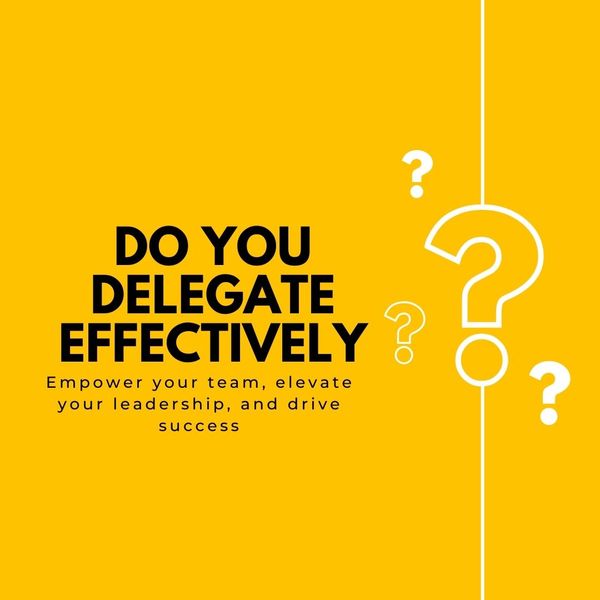No matter how harmonious, every workplace faces a universal challenge: conflict. It's a natural outcome when diverse minds, each with its own set of values and habits, come together. Sometimes, these differences lead to misunderstandings, but other times, they can escalate into more profound disputes. If we look the other way, the consequences can be dire. Teams can become fragmented, enthusiasm can wane, and projects can stall, causing organizations to grapple with lost opportunities and dwindling morale.
But here's the heartening truth: conflict isn't a dead-end. When approached with understanding and skill, it can be a powerful tool. It can shed light on hidden issues, pave the way for stronger bonds, and ignite innovative ideas. Remember, it's not about avoiding disagreements but navigating them with empathy and expertise. So, let's dive in and transform these challenges into opportunities, ensuring that our workplaces are conflict-free and brimming with potential and collaboration.
Over the past few weeks, several of you have reached out, sharing your challenges with navigating conflict at work. This resonated deeply with me, as every leader, regardless of industry or stature, grapples with this issue.
Definition of Conflicts
Conflict is natural when individuals or groups have differing opinions, beliefs, needs, or desires. In a professional setting, such as a workplace, these conflicts can manifest as simple disagreements or escalate to significant disruptions that hinder daily operations.
There are primarily two categories of conflicts:
- Personality Conflicts: These arise from emotional factors and personal differences. Feelings like anger, stress, jealousy, or frustration can fuel these conflicts. For instance, two colleagues might not get along because their personalities clash or due to past misunderstandings.
- Substantive Conflicts: These are directly related to work tasks and tangible issues. They might arise from disagreements over team decisions, differing views on an employee's performance, or debates about the company's future direction. For example, a team might have a split opinion on the launch strategy of a new product.
If these conflicts aren't addressed promptly, they can spread, leading to broader issues involving entire teams, departments, or even multiple business units. This can create a toxic environment, reducing overall productivity and morale.
Conflict resolution, therefore, is crucial. It's the method of pinpointing the root causes of disagreements and finding solutions to ensure a harmonious and efficient workplace. By addressing and resolving these issues, businesses can maintain a positive atmosphere where employees collaborate effectively and contribute to the company's success.
Benefits of Conflicts
Conflict is inevitable, but it's not inherently harmful. When managed with expertise, conflict can catalyze growth and innovation. Benefits of conflicts include:
- Building Trust: Sorting out conflicts well can deepen trust. It shows that respect remains, even amidst differences.
- Ideas Born from Challenge: When our ideas are questioned, we're nudged to think deeper and polish them further.
- Understanding Ourselves: Conflicts allow us to see and learn more about our responses.

Major Causes of Conflicts
- Ego Battles: When it becomes about 'winning' rather than genuinely resolving the issue.
- Misinformation: Misunderstandings arise from unclear communication or lack of complete data.
- Personal Values Gap: Conflicts surface when team members prioritize different beliefs or goals.
- Avoidance: The reluctance to engage in potentially uncomfortable conversations.
- Tension Overload: Stress and high-pressure environments can amplify minor disagreements.
Strategies for Conflict Resolution
- Raise the issue Early: Addressing conflicts when they arise prevents them from escalating.
- Manage Your Emotions: Stay calm and avoid playing the blame game.
- Show Empathy: Understand the other person's perspective to build mutual respect.
- Practice Active Listening: Ensure you truly understand the other party's viewpoint.
- Acknowledge Criticism: Use feedback as a tool for growth.
Three-Step Framework for Conflict Resolution
Conflict management consultants Peter and Susan Glaser propose a three-step strategy:
- Prove You Understand: Before jumping to conclusions, take the time to understand the other party's perspective. This mutual understanding lays the foundation for a productive conversation.
- Acknowledge Your Role: Recognize and admit if you've played a part in the conflict. This mutual acknowledgment fosters trust and understanding.
- Revisit if Necessary: If a conversation doesn't lead to a resolution, it's okay to revisit it later. Sometimes, a fresh perspective or additional reflection can lead to breakthroughs.
Example from a Software Engineering Team at Amazon
A few years ago, Alex and Jamie (names changed) were locked in a debate. We discussed the design for a new feature on the Amazon Canada website.
Alex, an eager software engineer, recently learned about serverless architectures.
"Serverless is the future; scalable, efficient, and cost-effective. It would revolutionize the way our team has worked" - Alex
On the other side was Jamie, the experienced team lead. For years, Jamie had banked on microservices for stability and robustness.
"Alex," Jamie cautioned, "I appreciate the innovation, but we've built our entire platform on microservices. There's a lot at stake."
The atmosphere turned frosty. The team was split. There were strong arguments on both sides. I could sense the mounting tension, so I proposed a sit-down with Alex and Jamie the following day. There are no blame games, just a constructive discussion.
During the talk:
- Early Discussion: I emphasized the importance of discussing new ideas early.
- Stayed Objective: I reminded them, "It's about what's best for our users, team, and Amazon."
- Empathetic Understanding: Alex explained the benefits of on-the-fly scalability and cost efficiency of serverless. Jamie countered, mentioning reliability and the team's expertise with microservices.
- Active Listening: It wasn't just about airing views but genuinely understanding them.
- Collaborative Resolution: We roped in Sam, a senior engineer (L6). Based on his experience, Sam proposed a hybrid approach: use serverless for non-critical, variable loads and stick with microservices for core, predictable processes.
The result? By the following month, we were testing this blended architecture. Both Alex and Jamie contributed to the improved, efficient system.
The takeaway: Sometimes, the middle ground isn't a compromise; it's the best of both worlds.
Frequently Asked Questions
Q1. Why is conflict resolution important in the workplace?
A. Resolving conflicts maintains a harmonious working environment, promotes collaboration, and addresses issues before they escalate.
Q2. What are common sources of workplace conflicts
A. Differences in communication styles, conflicting goals, personality clashes, and competing priorities are common sources.
Q3. How can managers address conflicts effectively?
A. Managers should act as mediators, listen to both sides, understand perspectives, and work towards a mutually beneficial solution.
Q4. How does conflict resolution enhance team productivity?
A. A harmonious environment leads to improved morale, better focus, and increased efficiency.
Q5. When should higher management intervene in conflict resolution?
A. When conflicts involve larger organizational issues or can't be resolved at the team level, higher management should step in.
Conclusion
In the rapidly evolving world of tech, differences of opinion aren't just inevitable; they're essential. They spark the discussions that lead to innovation. But it's crucial to remember that conflict, when approached constructively, becomes a tool rather than a hindrance. The tale of Alex and Jamie at Amazon isn't just a story of two competing ideologies but a testament to the power of collaboration, open dialogue, and the magic that happens when we prioritize the collective goal over individual perspectives. Always remember: It's not about who's right but what's suitable, for the bigger picture. Harness conflict, don't shy away from it, and you'll find solutions you never thought possible.








